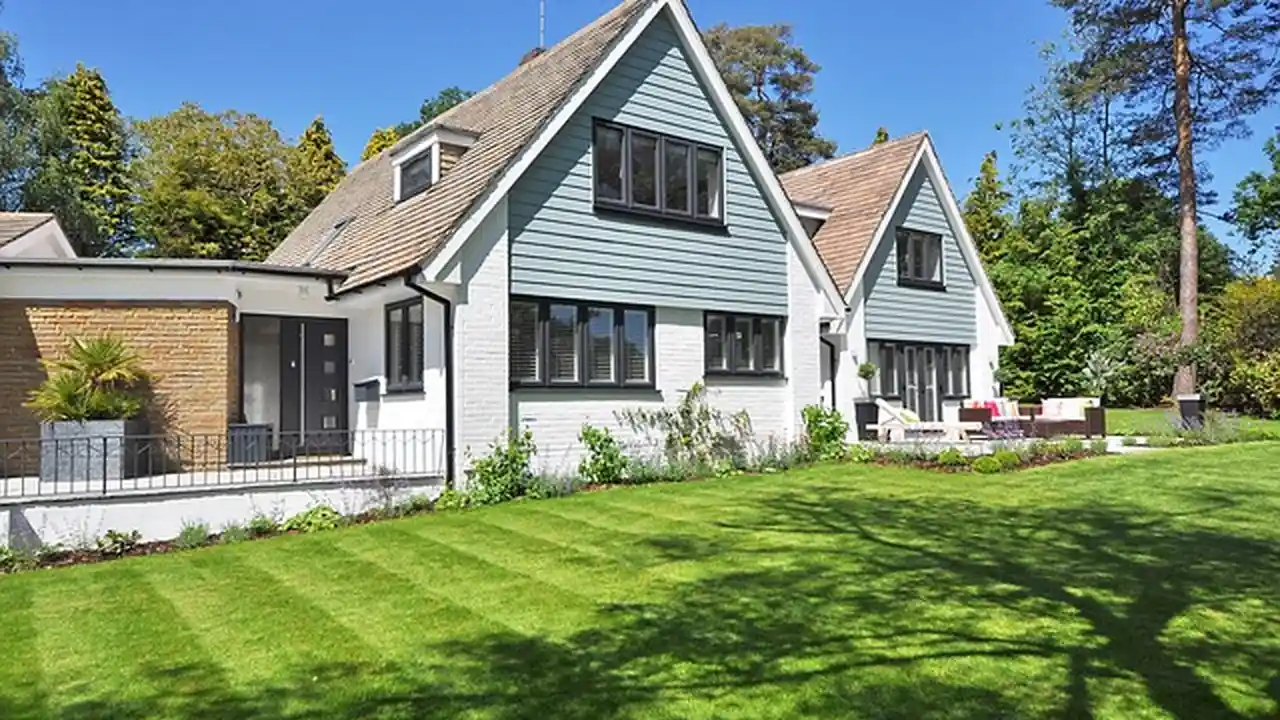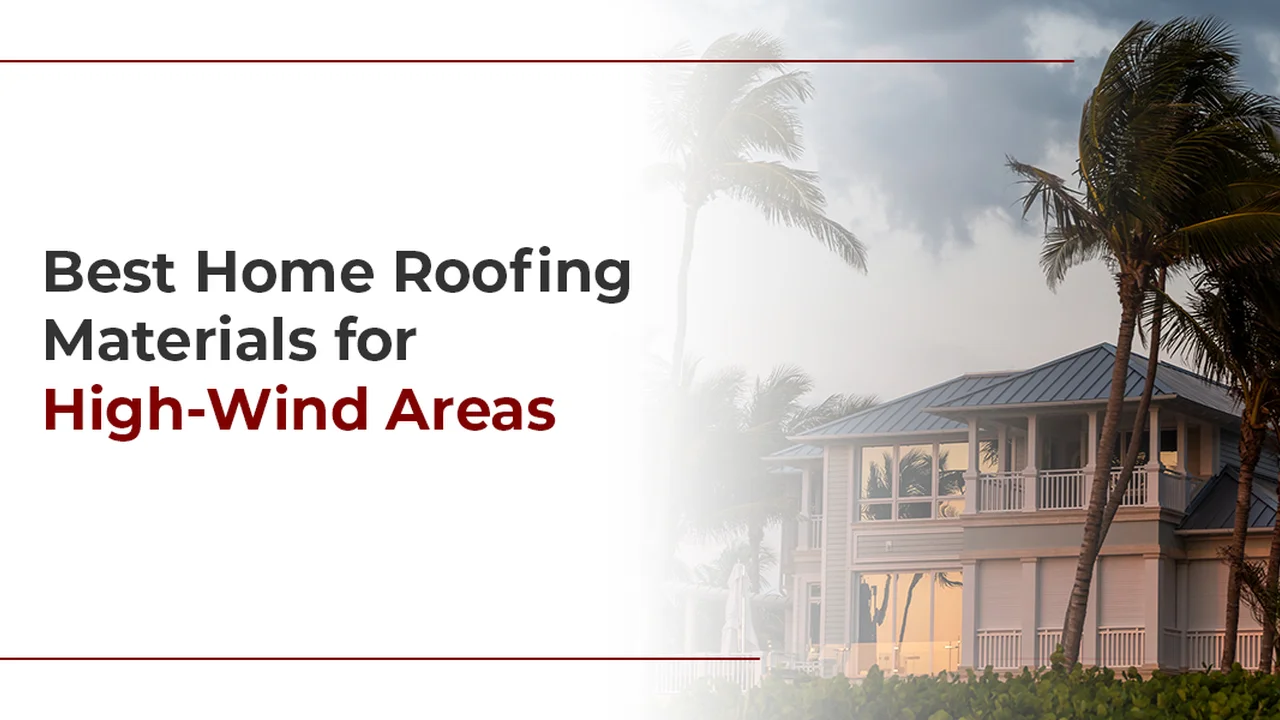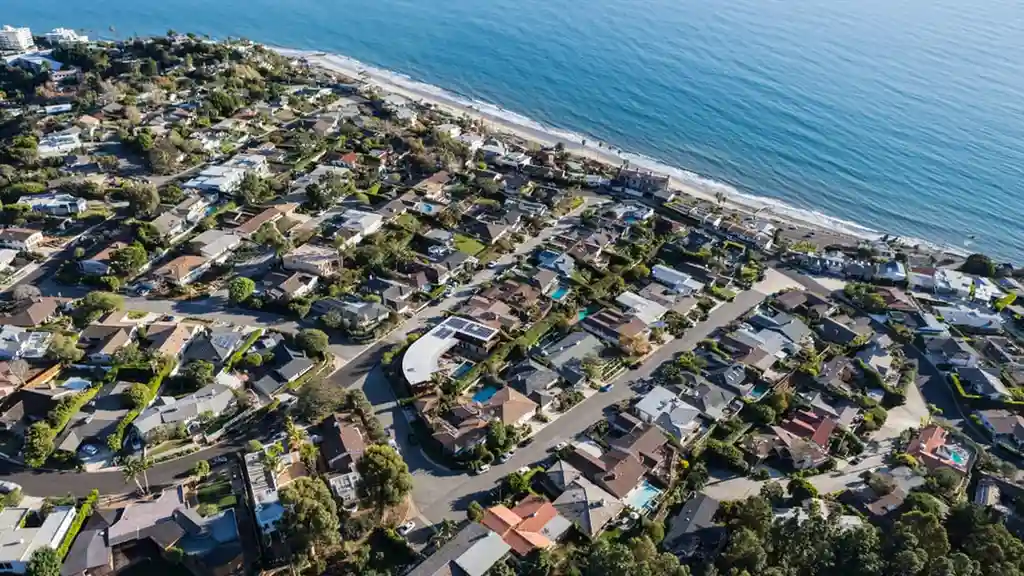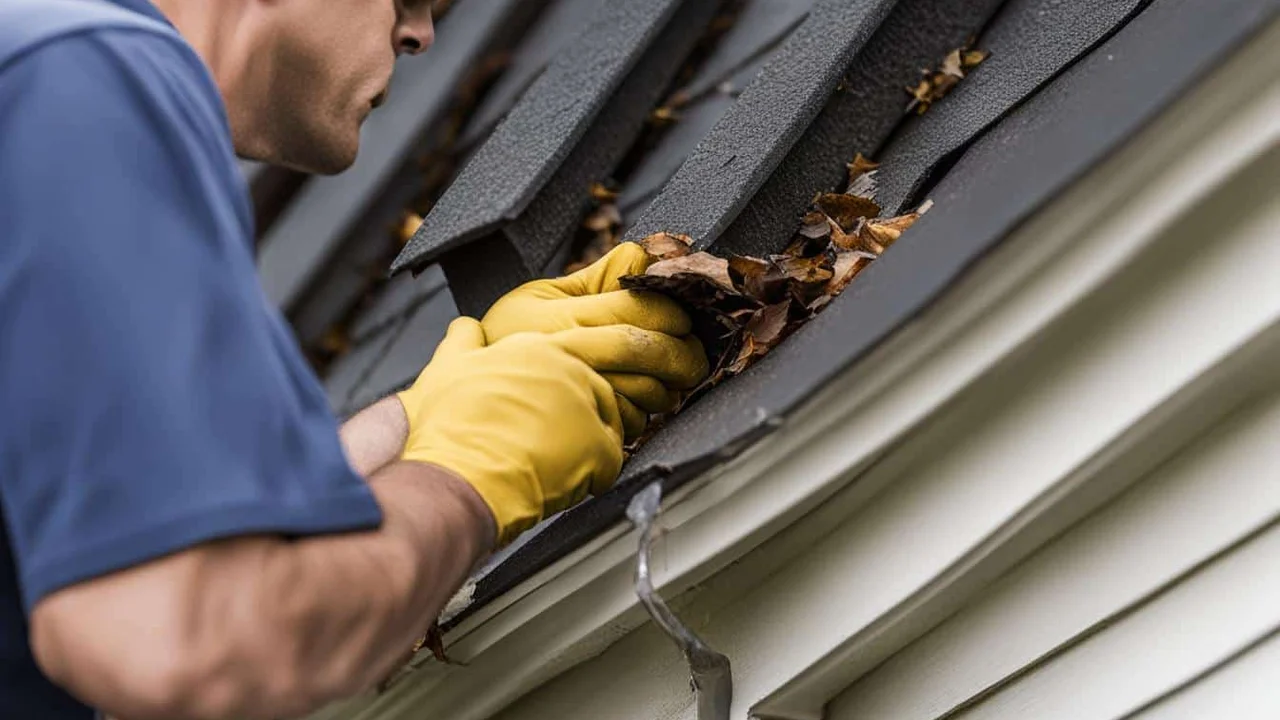3 Best Eco Friendly Roofing Options
Learn about the top 3 eco-friendly roofing materials that are sustainable and energy-efficient for modern homes.

Discover the top 3 eco-friendly roofing materials that are sustainable and energy-efficient for modern homes. Making environmentally conscious choices for your home is more important than ever, and your roof plays a massive role in both your home's energy efficiency and its overall environmental footprint. When it comes to roofing, 'eco-friendly' isn't just a buzzword; it means materials that are sustainable, durable, energy-efficient, and often made from recycled content or are recyclable themselves. This guide will dive deep into three of the best eco-friendly roofing options available today, exploring their benefits, drawbacks, specific product recommendations, use cases, and pricing.
Understanding Eco Friendly Roofing Materials
Before we jump into the specific options, let's clarify what makes a roofing material eco-friendly. It's not just about being 'green.' It encompasses several factors:
- Sustainability: Is the material sourced responsibly? Is it renewable?
- Durability and Longevity: A roof that lasts longer means less waste and fewer resources used for replacement.
- Energy Efficiency: Does it help reduce heating and cooling costs?
- Recycled Content: Is it made from recycled materials?
- Recyclability: Can the material be recycled at the end of its life?
- Low Environmental Impact: Does its production or disposal harm the environment?
Considering these points, let's explore our top three picks.
1 Recycled Content Roofing Shingles Sustainable and Durable Options
Recycled content roofing shingles are a fantastic eco-friendly choice, primarily because they divert waste from landfills and often offer superior durability compared to traditional asphalt shingles. These shingles are typically made from a blend of recycled materials, such as rubber, plastic, and sometimes even wood fiber. They mimic the look of traditional roofing materials like slate or wood shakes but come with a much smaller environmental footprint.
Benefits of Recycled Content Roofing Shingles for Eco Conscious Homeowners
- Waste Reduction: The most obvious benefit is reducing landfill waste.
- Durability: Many recycled shingles are incredibly durable, resistant to impact, wind, and fire. They often come with long warranties, sometimes up to 50 years.
- Aesthetics: They can replicate the look of high-end materials like slate or cedar shakes at a fraction of the cost and with better performance.
- Energy Efficiency: Some recycled shingles are designed with reflective properties, contributing to a 'cool roof' effect that reduces heat absorption.
- Low Maintenance: Generally, these roofs require less maintenance than natural wood or slate.
Drawbacks of Recycled Content Roofing Shingles Considerations for Installation
- Cost: While often more affordable than natural slate or cedar, they can be more expensive upfront than basic asphalt shingles.
- Installation: Some specialized products might require specific installation techniques, potentially increasing labor costs.
- Weight: Depending on the material, some recycled shingles can be heavier than asphalt, requiring a stronger roof deck.
Recommended Recycled Content Roofing Products and Use Cases
DaVinci Roofscapes EcoBlend Shingles
DaVinci Roofscapes offers a range of composite roofing products made from virgin resins, but their EcoBlend series incorporates cool roof technology. While not strictly 'recycled content' in the traditional sense, their commitment to sustainability through energy efficiency and extreme longevity (50-year limited warranty) makes them a strong contender. They are made from 100% virgin resins, which are fully recyclable. The EcoBlend line is designed to reflect solar energy, reducing the heat island effect and lowering cooling costs. They come in various colors and styles, mimicking slate and shake.
- Use Case: Ideal for homeowners looking for a high-end aesthetic (slate or shake look) with exceptional durability and energy efficiency, especially in hot climates. Suitable for both residential and commercial properties.
- Estimated Price: $10 - $18 per square foot installed, depending on style and complexity.
Enviroshake Composite Roofing
Enviroshake products are made from 95% recycled materials, including plastics, rubber, and wood fiber. They offer a highly durable and authentic-looking alternative to natural cedar shakes and slate. These shingles are resistant to mold, mildew, insects, and UV degradation, making them perfect for diverse climates.
- Use Case: Excellent for those who love the look of natural cedar or slate but want a maintenance-free, highly durable, and truly recycled option. Great for areas with harsh weather conditions.
- Estimated Price: $12 - $20 per square foot installed.
Euroshield Rubber Roofing
Euroshield roofing products are made from up to 95% recycled tire rubber, diverting millions of tires from landfills annually. They offer incredible impact resistance (Class 4 hail rating), wind resistance, and a natural look. They come in various styles, including shake and slate profiles.
- Use Case: Perfect for homeowners in hail-prone areas or those prioritizing extreme durability and a genuine commitment to recycling. Offers a unique aesthetic that stands out.
- Estimated Price: $10 - $16 per square foot installed.
Comparison of Recycled Content Roofing Products
| Feature | DaVinci EcoBlend | Enviroshake | Euroshield |
|---|---|---|---|
| Primary Material | Virgin Polymer (Recyclable) | 95% Recycled Plastic/Rubber/Wood Fiber | Up to 95% Recycled Tire Rubber |
| Aesthetic | Slate, Shake | Cedar Shake, Slate | Shake, Slate |
| Durability | Excellent (50-year warranty) | Excellent (50-year warranty) | Exceptional (Class 4 Hail, 50-year warranty) |
| Energy Efficiency | High (Cool Roof rated) | Good | Good |
| Recycled Content | 0% (but 100% recyclable) | High (95%) | Very High (up to 95%) |
| Price (Installed per sq ft) | $10 - $18 | $12 - $20 | $10 - $16 |
2 Metal Roofing Long Lasting and Energy Efficient Solutions
Metal roofing has surged in popularity as an eco-friendly option, and for good reason. It's incredibly durable, energy-efficient, and often made from a high percentage of recycled content, plus it's 100% recyclable at the end of its very long life. Common materials include steel, aluminum, copper, and zinc, each offering unique benefits.
Advantages of Metal Roofing for Sustainable Homes
- Longevity: Metal roofs can last 40-70 years, significantly outperforming asphalt shingles.
- Recycled Content & Recyclability: Most metal roofing contains 25-95% recycled content and is 100% recyclable.
- Energy Efficiency: Metal roofs reflect solar radiant heat, which can reduce cooling costs by 10-25%. Many are available with 'cool roof' coatings.
- Durability: Resistant to fire, rot, insects, and mildew. They can withstand high winds and heavy snow loads.
- Low Maintenance: Once installed, metal roofs require very little maintenance.
- Lightweight: Lighter than many other roofing materials, which can be beneficial for structural integrity.
Disadvantages of Metal Roofing What to Consider
- Cost: The upfront cost is generally higher than asphalt shingles, though the long-term value often offsets this.
- Noise: Some homeowners worry about noise during heavy rain or hail, though proper insulation and decking can mitigate this.
- Denting: While durable, some softer metals like aluminum can dent from heavy impact.
- Aesthetics: While styles have vastly improved, some still prefer the look of traditional shingles or tiles.
Recommended Metal Roofing Products and Use Cases
Standing Seam Metal Roofing
Standing seam is one of the most popular types of metal roofing. It features vertical panels with raised seams that interlock, creating a sleek, modern look. It's highly durable and offers excellent weather protection.
- Use Case: Ideal for modern homes, commercial buildings, and homeowners prioritizing longevity, low maintenance, and energy efficiency. Suitable for various climates, especially those with heavy snow or rain.
- Estimated Price: $8 - $16 per square foot installed for steel or aluminum.
Metal Shingles or Tiles
These are metal panels stamped and formed to resemble traditional asphalt shingles, wood shakes, or clay tiles. They offer the benefits of metal roofing with a more conventional aesthetic.
- Use Case: Perfect for homeowners who want the durability and eco-friendliness of metal but prefer the classic look of other roofing materials. Great for residential applications where aesthetics are key.
- Estimated Price: $7 - $14 per square foot installed for steel or aluminum.
Corrugated Metal Roofing
Corrugated metal is a more economical option, often seen on agricultural buildings or as an industrial aesthetic. It's durable and effective but might not suit all residential styles.
- Use Case: Best for outbuildings, workshops, or homes aiming for a rustic or industrial look. A cost-effective, durable solution.
- Estimated Price: $4 - $8 per square foot installed.
Comparison of Metal Roofing Products
| Feature | Standing Seam | Metal Shingles/Tiles | Corrugated Metal |
|---|---|---|---|
| Aesthetic | Modern, Sleek | Traditional (mimics asphalt, wood, tile) | Industrial, Rustic |
| Longevity | 40-70 years | 40-70 years | 30-50 years |
| Energy Efficiency | High (Cool Roof options) | High (Cool Roof options) | Good |
| Recycled Content | High (25-95%) | High (25-95%) | High (25-95%) |
| Price (Installed per sq ft) | $8 - $16 | $7 - $14 | $4 - $8 |
3 Green Roof Systems Living Roofs for Urban and Suburban Homes
Green roof systems, also known as living roofs, are perhaps the most visually striking and ecologically beneficial eco-friendly roofing option. They involve covering a roof with vegetation planted over a waterproofing membrane. Green roofs come in two main types: extensive (thinner, lighter, low-maintenance plants) and intensive (thicker soil, wider variety of plants, more maintenance).
Environmental Benefits of Green Roof Systems for Sustainable Living
- Stormwater Management: Green roofs absorb significant amounts of rainwater, reducing runoff and strain on drainage systems.
- Improved Air Quality: Plants filter pollutants from the air and produce oxygen.
- Reduced Urban Heat Island Effect: They cool the surrounding environment, especially in urban areas.
- Energy Savings: The vegetation acts as natural insulation, reducing heating and cooling costs.
- Increased Biodiversity: They provide habitats for insects and birds.
- Extended Roof Lifespan: The vegetation protects the waterproofing membrane from UV radiation and extreme temperature fluctuations, significantly extending its life.
- Aesthetics & Amenity Space: They are beautiful and can create usable outdoor spaces.
Challenges of Green Roof Systems Important Considerations
- Cost: Green roofs have a higher upfront cost due to the complex layering system and specialized installation.
- Weight: The added weight of soil and plants (especially when wet) requires a structurally sound roof deck, which might necessitate structural reinforcement.
- Maintenance: While extensive green roofs are low-maintenance, all green roofs require some level of care, including irrigation, weeding, and plant care.
- Waterproofing: The waterproofing layer is critical; any failure can lead to significant damage.
- Installation Complexity: Requires specialized contractors experienced in green roof installation.
Recommended Green Roof System Components and Use Cases
Extensive Green Roof Systems
These are lighter, with a shallow growing medium (2-6 inches) and typically planted with sedums, grasses, and other drought-tolerant, low-maintenance plants. They are primarily for ecological benefits rather than human access.
- Use Case: Suitable for most residential and commercial buildings with adequate structural capacity. Ideal for achieving ecological benefits with minimal ongoing maintenance.
- Estimated Price: $15 - $30 per square foot installed, depending on complexity and plant choice.
Intensive Green Roof Systems
These have a deeper growing medium (6 inches to several feet) and can support a wider variety of plants, including shrubs and small trees. They are designed to be accessible and can function as parks or gardens.
- Use Case: Best for larger commercial buildings or high-end residential projects where the roof is intended as an amenity space. Requires significant structural support.
- Estimated Price: $30 - $60+ per square foot installed, highly variable based on design and plant selection.
Key Components of a Green Roof System
- Waterproofing Membrane: A robust, root-resistant membrane is essential (e.g., EPDM, TPO, PVC).
- Root Barrier: An additional layer to protect the waterproofing from plant roots.
- Drainage Layer: Allows excess water to drain away, preventing waterlogging.
- Filter Fabric: Prevents fine soil particles from clogging the drainage layer.
- Growing Medium (Substrate): A specialized lightweight soil mix designed for roof conditions.
- Vegetation: Sedum mats, plugs, or individual plants chosen for their hardiness and suitability for the climate.
Comparison of Green Roof System Types
| Feature | Extensive Green Roof | Intensive Green Roof |
|---|---|---|
| Growing Medium Depth | 2-6 inches | 6 inches to several feet |
| Weight (saturated) | 15-50 lbs/sq ft | 50-150+ lbs/sq ft |
| Plant Diversity | Low (sedums, grasses) | High (shrubs, trees, perennials) |
| Maintenance | Low | High |
| Accessibility | Limited (for maintenance only) | Designed for human access |
| Cost (Installed per sq ft) | $15 - $30 | $30 - $60+ |
Choosing the Right Eco Friendly Roofing for Your Home
Selecting the best eco-friendly roofing option depends on several factors, including your budget, aesthetic preferences, local climate, and structural capacity of your home. Here are some questions to guide your decision:
- What's your budget? Recycled content shingles and some metal options can be more accessible, while green roofs are a significant investment.
- What look are you going for? Do you prefer traditional aesthetics, modern sleekness, or a living garden?
- What's your climate like? Hot climates benefit from cool roofs (metal, reflective recycled shingles). Areas with heavy rain might favor green roofs for stormwater management. Hail-prone regions will appreciate the impact resistance of rubber shingles or certain metal roofs.
- How much maintenance are you willing to do? Metal and recycled shingles are generally low maintenance, while green roofs require ongoing care.
- What's your home's structural capacity? Green roofs, especially intensive ones, require significant structural support.
- Are there local incentives? Check for tax credits or rebates for installing energy-efficient or green roofing.
No matter which option you choose, investing in an eco-friendly roof is a smart decision for both your wallet and the planet. These materials offer superior longevity, energy efficiency, and a reduced environmental impact, making your home more sustainable for years to come. Always consult with experienced roofing professionals to ensure proper installation and to get accurate quotes tailored to your specific project.
:max_bytes(150000):strip_icc()/277019-baked-pork-chops-with-cream-of-mushroom-soup-DDMFS-beauty-4x3-BG-7505-5762b731cf30447d9cbbbbbf387beafa.jpg)






